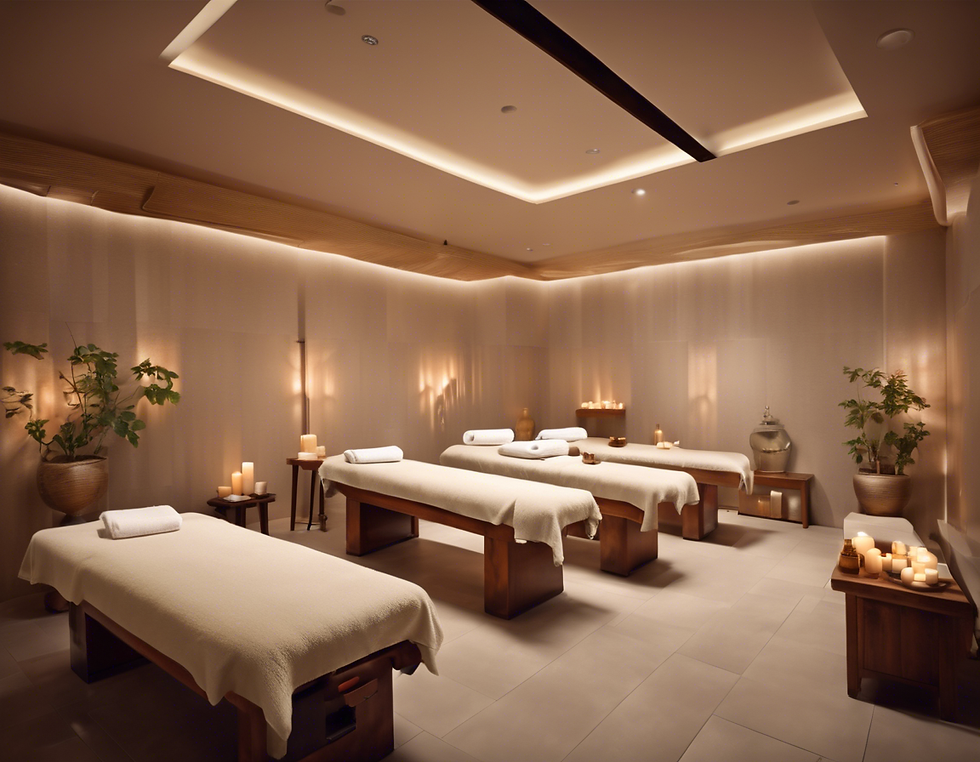Maximize Your Massage Sessions: How to Master Aftercare for Optimal Health and Progress
- massagebyerinfaye
- Jul 11, 2024
- 3 min read
Updated: Mar 26
Massage therapy has an incredible ability to rejuvenate your body and calm your mind. But the benefits do not stop when you leave the massage room. To truly harness the power of your massage, it is essential to adopt effective aftercare practices. This guide will walk you through key strategies such as stretching, hydration, nutrition, and foam rolling that will help you keep that wonderful feeling of relaxation and flexibility. Let’s explore how proper aftercare can elevate your health and progress!
The Importance of Stretching
Stretching is one of the best things you can do right after your massage to maintain the flexibility your therapist has worked to create. Your muscles have just enjoyed a time of relaxation and extension, so it’s important to keep that momentum going. By regularly incorporating gentle stretches into your daily routine, you can optimize the results of your massage.
Studies show that stretching can improve blood circulation by as much as 20%. This aids in delivering nutrients to your muscle tissues while removing waste. Spend just 5-10 minutes a day performing light stretches, focusing on the areas that your massage therapist highlighted. For example, if your lower back was a focal point, simple stretches like cat-cow or seated forward bends can keep your muscles feeling liberated and pain-free.
Hydrate, Hydrate, Hydrate!
Hydration is a vital part of your massage aftercare. Water is crucial for muscle repair and reducing soreness. Right after your massage, your therapist may remind you to drink plenty of water to help eliminate toxins released during the session.
Proper hydration allows your muscles to function better. Dehydrated muscles can lead to cramping and tightness, reversing the benefits of your massage. Aim to drink at least half your body weight in ounces of water daily. For instance, if you weigh 160 pounds, target 80 ounces of water each day. Staying well-hydrated will enhance your overall health, energy levels, and well-being.
Embrace Healthy Eating Habits
While massage therapy helps your body feel good, it needs the right nutritional support to maximize its effectiveness. Eating a balanced diet rich in antioxidants, healthy fats, and lean proteins aids recovery and muscle function. Foods like spinach, almonds, salmon, and blueberries are excellent choices that can help repair muscle tissue and reduce inflammation.
To put this into practice, consider meal prepping some healthy dishes that you enjoy. For example, a quinoa salad loaded with leafy greens, nuts, and grilled chicken can serve as a great post-massage meal. These nutritious foods provide your body with the tools it needs to heal, ensuring you feel your best between sessions.
The Role of Foam Rolling
Incorporating foam rolling into your routine can greatly improve muscle flexibility between massages. This self-myofascial release method can help relax tight muscles and enhance the effects of your previous session.
Foam rolling can increase blood flow by up to 30% in targeted areas. Spend about 10-15 minutes a few times a week using a foam roller. Focus on muscle groups that are commonly tight, such as your thighs, calves, and back. By breaking down knots and adhesions, foam rolling keeps your muscles ready for your next massage.
Timing Between Sessions
It may seem economical to space out your massage sessions, but this can slow your progress. When you wait too long between appointments, your muscles may tighten up, causing discomfort to return.
For optimal health and improvement, consider scheduling your sessions closer together, especially during stressful periods or after intense physical activity. Studies suggest that maintaining regular appointments can enhance recovery by 40% and sustain the benefits of each session. Regular massages help your body manage tension and keep you moving forward toward your health goals.
Listen to Your Body
Listening to your body is crucial in your aftercare journey. Everyone’s experience with massage therapy is unique, and your body may require different approaches to truly thrive. Pay attention to any soreness, tightness, or discomfort after your sessions.
If certain stretches or foam rolling techniques do not feel right, feel free to modify them. Open a dialogue with your massage therapist about your aftercare and seek their advice for personalized strategies that address your needs. Remember, your well-being is important, and tuning into your body’s signals will help you maintain optimal health.
Final Thoughts
Integrating aftercare practices like stretching, hydration, healthy nutrition, and foam rolling into your routine can significantly boost your massage therapy experience. These strategies are key in maximizing the benefits of your sessions and maintaining your overall health.
By prioritizing aftercare, keeping regular appointments, and listening closely to your body, you are paving the way for a happier and healthier you. Embrace the journey toward wellness and make the most of your massage therapies for lasting results!



Comments